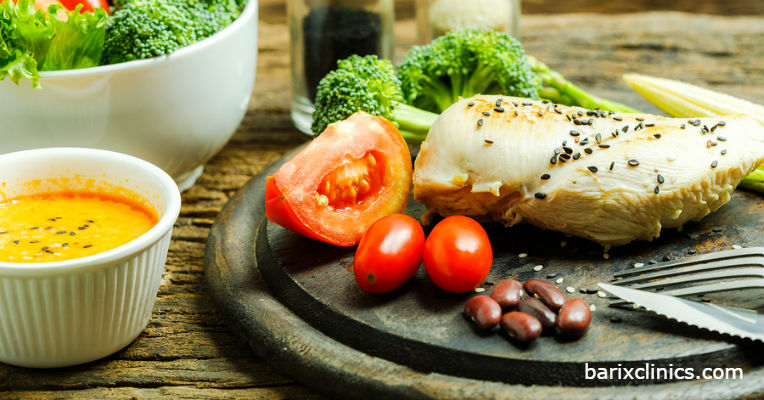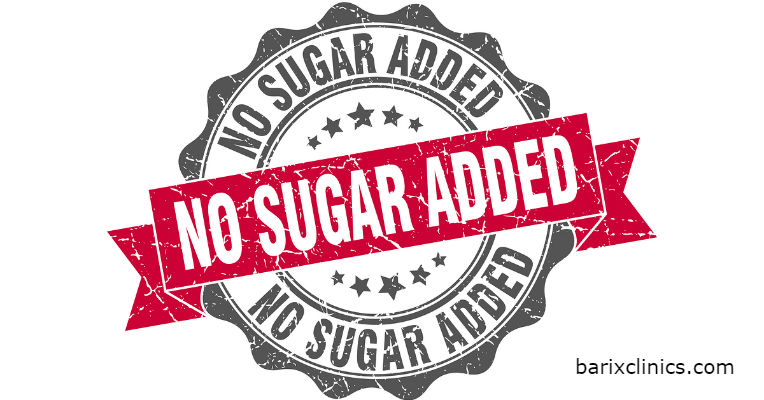Warning: More Reasons to Eat Clean
Our food supply has changed drastically in the last 50 years. For convenience sake, it’s often packaged, shelf-stable, highly processed and ready-to-eat with minimal prep required. Food manufactures have done a great job creating foods that taste great and we have a wider variety of foods available than any time in history. Just think of what can be bought in a local grocery store–50 or so yogurt options, 100 different cereals, several bread selections, 20 brands of frozen pizza, a multitude of frozen fruit and veggies, and on and on. We can put together a dinner of lasagna (frozen), garlic bread (bakery or frozen), and salad (pre-washed and cut) with very little effort—a meal that would have taken our mothers or grandmothers hours to prepare. Quick and easy meets the demands of our busy lifestyles, but it has taken a toll on our health.
What’s the Problem with Convenience?
Unfortunately, there are lots of reasons to avoid processed foods. It’s what’s added during processing; sugar, fat, salt and additives and what’s taken away; fiber, vitamins and minerals that makes processed foods inferior to fresh, unprocessed foods. New research indicates that some of the additives, called emulsifiers, used to extend the shelf life and improve the texture of processed foods are wreaking havoc on the bacteria living in our intestines—our microbiome. This, in turn, may be having unanticipated negative consequences on our health.
Emulsifiers
Emulsifiers are substances that help give foods a smooth texture and consistency. Many processed foods contain emulsifiers to keep ingredients from separating, improve the texture and taste, and increase shelf life. Emulsifiers are found commonly in bread, cakes, margarine, salad dressings, ice-cream, frozen desserts, coffee whiteners, peanut butter, marshmallows, chocolate coatings, chewing gum, and many other processed foods.
Initially, food manufactures used egg yolk as an emulsifier. A switch to a soybean product, lecithin, was made when it was found to provide a longer shelf-life than egg yolk. Later, fatty acids in the form of mono and diglycerides were introduced. Now, a wide range of natural and synthetic emulsifiers are used extensively in processed foods.
Names of Common Emulsifiers
| Polysorbate 80 | Lecithin | Carrageenan | Polyglycerols |
| Xanthan gum (and other gums) | Calcium Stearoyl Di Laciate (CSL) | PolyGlycerol Ester (PGE) | Sorbitan Ester (SOE) |
| PG Ester (PGME) | Sugar Ester (SE) | Monoglyceride (MG) | Acetylated Monoglyceride (AMG) |
| Lactylated Monoglyceride (LMG) |
Emulsifiers Are Everywhere
Even if you’re doing your best to eat healthy, it is hard to avoid consuming emulsifiers. Organic, health foods, and even baby formula are not immune. Carrageenan, an emulsifier derived from seaweed is often found in nut milks, yogurt, cheese, meat products, and even infant formula.
Emulsifiers are also used commonly in cosmetics, medications, and vitamin supplements. They keep medications suspended in fluids, help improve the consistency of gel capsules, allow pills to come apart in the stomach, and increase medication absorption in the small intestine.
What’s the Problem?
These ingredients are added extensively to our food supply. They were considered safe; nontoxic. They’ve provided wonderfully smooth, great tasting foods. But now, years later, new research indicates that common emulsifiers like carboxymethylcellulose, polysorbate 80, carrageenan, and others are linked to changes in the gut bacteria that can lead to inflammation throughout the body. This inflammation contributes to a wide range of health concerns including high blood pressure, inflammatory bowel disease, metabolic syndrome, obesity, anxiety and cancer.
How Emulsifiers Affect the Gut Microbiome
Research indicates that regularly eating foods that contain emulsifiers alters the number and type of bacteria that live in the intestine. This change causes the thin layer that separates the gut bacteria from the intestinal cell wall to lose its effectiveness. The thinned out protective layer allows the bacteria to react with the cell walls which activates the immune system, causing inflammation. In addition, the compromised intestinal wall is no longer an efficient barrier, protecting our bodies from toxins. Toxins enter and travel through the bloodstream, setting off chronic low-grade inflammation throughout the body. We know that chronic inflammation is associated with many of our modern day diseases including food allergies, inflammatory bowel disease, celiac disease, obesity and related disorders, type-2 diabetes, cardiovascular disease, and liver disease.
Unexpected Consequences
No one thought that when food manufactures replaced some of the sucrose (table sugar) in ice cream, ground beef products, pasta and other processed foods with a sweetening/texturizing ingredient called trehalose it would generate an epidemic of severe C. diff. infections.
Clostridioides difficile, more commonly known as C. diff., is a common intestinal bacterium. It’s generally not a problem unless it grows out of control and causes gastrointestinal symptoms including severe diarrhea. Those taking antibiotics, over age 65, with a weakened immune system, and now apparently a diet that includes trehalose, are most susceptible. Scientists found that certain strains of C. diff. thrive on trehalose, especially when antibiotics kill off other bacterial strains that normally keep C. diff. in check. It can quickly multiply and is difficult to treat since it is resistant to many antibiotics. Thousands of people a year die from C. diff. infections.
Trehalose is hard to avoid. It can be found in baked goods, alcoholic beverages, instant coffees and teas, cheese, frozen dairy, imitation dairy products, milk products, fats and oils, gravies, sweet sauces, condiments, fruit ices, jams and jellies, processed fruits, processed vegetables, breakfast cereals, other grains, egg products, fish products, nut products, chewing gum, frosting, gelatins and puddings, hard candy, snack foods, soft candy, seasonings/flavors, and soups.
Obesity
Processed foods have contributed to the obesity epidemic for several reasons. They tend to be higher in calories and have more added sugar and fat than unprocessed foods. The high palatability, ease of prep (often opening a container is all that is needed), and wide variety of food options encourages overeating. And now there are new studies indicating that it may not just be the excess calories we are eating in all of these highly processed foods that is causing us to gain weight. The emulsifiers so common in processed foods change the gut microbiome and induce inflammation. Inflammation, in return, reduces insulin sensitivity and changes metabolism leading to metabolic syndrome, obesity and type 2 diabetes.
How to Change Your Diet
The evidence is pretty compelling that we somehow need to find the time and energy to eat clean, fresh, wholesome food. For most, going back to growing our own food and cooking from all of our food from scratch isn’t feasible, but moving away from the health dangers of a highly processed diet, will have tremendous health returns. So what’s a busy, health-conscience person to do?
Any effort towards reducing the amount of highly processed foods is a plus. The good news is that when inflammation producing emulsifiers are removed from the diet, changes in the gut microbiota occur and inflammation is reduced—at least in mice.
Don’t shoot for perfection, just improvement. Clean eating means different things to different people, but the general idea is to choose foods that are as close to their natural form as possible. So instead of boxed, bagged, or packaged foods, choose fresh, whole ones–think an apple instead of applesauce, apple juice, apple pie, or apple fruit roll-ups. Here are some ideas to get you started.
- Make as many meals as you can at home starting with whole ingredients. Cook food in batches to help efficiency—making from scratch cooking more doable.
- Avoid artificial sweeteners like saccharine, aspartame, and sucralose that change the microbiota. Instead use stevia, erythritol, and xylitol to sweeten foods and beverages.
- Use antibiotics as sparingly as possible, with the advice and direction of your physician. Antibiotics destroy good bacteria, allowing C. diff. and other potentially dangerous strains to thrive.
- Eat fresh fruit and veggies for snacks rather than processed chips, crackers and other typical snack foods.
- Nourish the good bacteria in your gut by eating lots of specialized plant fiber (pre-biotics) that is food for the good bacteria that already live in our intestines.There are 3 main types of prebiotics:
- The non-starch polysaccharides inulin and fructo-oligosaccharides (also known as FOS) found in asparagus, leek, jicama, onions, banana, chicory root, dandelion root and garlic.
- Soluble Fiber. Found in psyllium, flaxseeds, cucumber, celery, carrots, oats, apples, oranges, pears, legumes, beans and nuts.
- Resistant starch. Found in grains, seeds, legumes, potatoes, green (unripe) bananas, and plantains.
As we learn more about how the microbiome impacts our health and well-being, there are sure to be updated recommendations. It’s impossible to control all of the toxins in our environment that impact our gut and our health. But, we can work towards eating a cleaner and more wholesome diet.
Pulled Pork
from: tastesoflizzyt.com
7 ounces diced tomatoes in juice
1/2 onion diced
1 teaspoons minced garlic
1 tablespoons tomato paste
1 tablespoons spicy brown mustard
1 1/2 tablespoons apple cider vinegar
1/2 tablespoon extra virgin olive oil
1 tablespoons paprika
1/4 teaspoon cayenne pepper
1 teaspoon salt
1/2 teaspoon black pepper
10 ounces pineapple chunks, in their own juice
2 pound pork tenderloin
In a blender, combine all ingredients for barbecue sauce and blend it until smooth.
Place the pork roast in a slow cooker and pour the barbecue sauce over it. Cook on low for 6-8 hours or until the pork shreds easily with a fork.
Using two forks, shred the pork, stir the pulled pork so the sauce mixes all together with the meat. Cook for an additional 30 minutes. Makes 8 servings.
Nutrition facts per serving: 164 calories, 24 grams protein, 4 grams fat, 6 grams carbohydrate, 434 mg sodium.
Peanut Butter Cookies
from walkingonsunshinerecipes.com
1 large egg
1 cup granulated erythritol
1 tsp. baking powder
1/2 tsp. vanilla
1 cup creamy peanut butter
1 tsp. water
Preheat the oven to 350 degrees. In a mixing bowl; beat together the egg, erythritol, baking powder and vanilla for about a minute. Add peanut butter and water and continue to beat until well mixed. Batter may be dry—just make sure it is mixed well.
Spray a cookie sheet and a fork with non-stick spray. Scoop a heaping tablespoon of batter for each cookie onto the cookie sheet. Use the fork to make crosshatch indentations on each cookie. Bake 12 –15 minutes until cookies feel firm and are slightly browned. Transfer to a baking rack and cool. Makes 12 cookies.
Nutrition information per cookie: 135 calories, 5 grams protein, 11 grams fat, 5 grams carbohydrate, 6 mg sodium.




